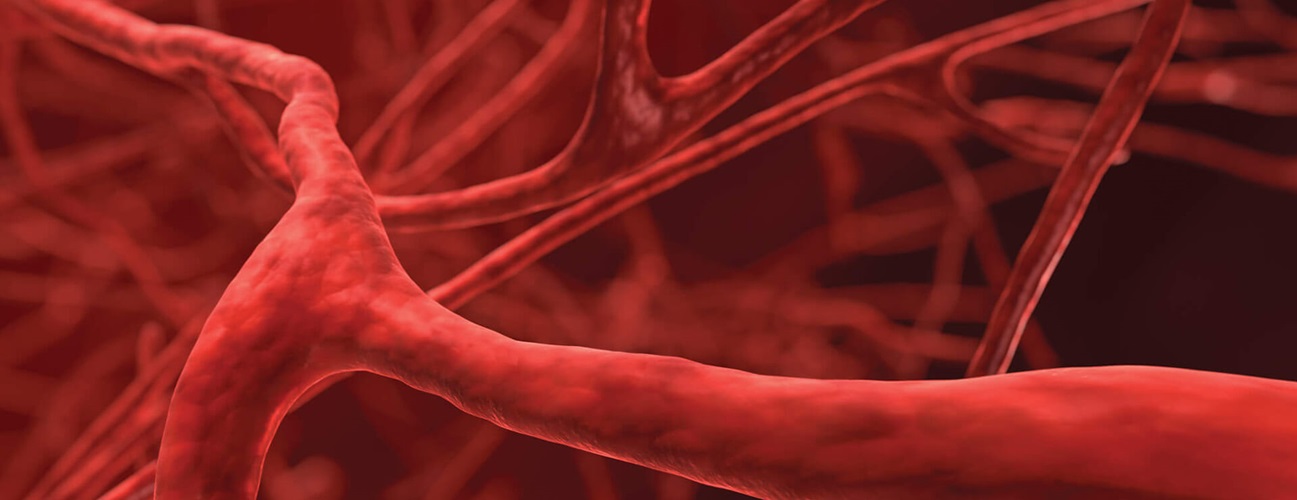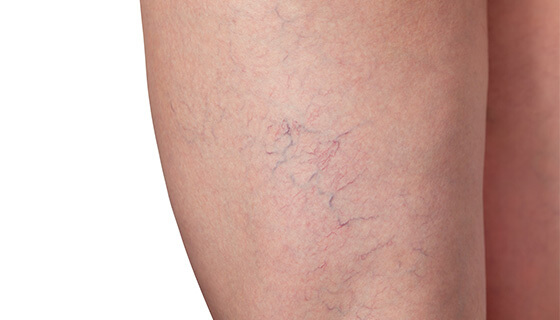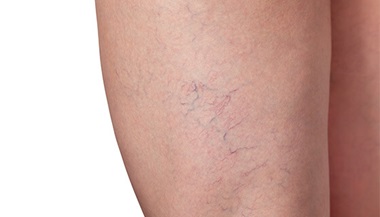Parkes Weber Syndrome
Parkes Weber syndrome (PWS) is a very rare disorder, present at birth, that causes arteriovenous malformations with abnormal connections (fistulas) between veins and arteries.
What You Need to Know
- Parkes Weber syndrome is a disorder that causes malformed blood vessels.
- The blood vessel malformations happen before birth and can create fistulas (abnormal connections between veins and arteries) that affect blood flow.
- Symptoms may include port wine birthmarks, an enlarged limb (usually a leg), bleeding, ulcers, pain and heart complications due to problems with blood flow.
- People with Parkes Weber syndrome can be treated with medications, physical therapy, compression garments, corrective shoes, and surgery or other procedures to block or remove malformed vessels.
What is Parkes Weber syndrome?
Parkes Weber syndrome is a very rare condition characterized by malformed blood vessels. The vascular malformations occur before birth as the baby is developing in the uterus. The condition affects one arm or leg (legs are more commonly affected), which can grow larger than the other.
The affected blood vessels may include veins (which carry oxygen-emptied blood toward the heart) and arteries (which carry oxygen-rich blood away from the heart). Normally, veins and arteries meet in small vessels called capillaries.
In the capillaries, arteries deliver oxygen to nourish tissues, and veins collect carbon dioxide and take it away. In Parkes Weber syndrome, the veins and arteries can connect abnormally, bypassing the capillaries.
The condition has similarities to Klippel-Trenaunay syndrome, another genetic disorder that causes blood vessel malformations that are present at birth. Diagnosis and treatment may be similar for both.
What causes PWS?
The cause of Parkes Weber syndrome is not conclusively known, but many patients with the symptoms of PWS have a change (mutation) in a particular gene that may be identified with a genetic blood test.
Parkes Weber Syndrome Symptoms
The signs and symptoms of Parkes Weber syndrome are related to malformed blood vessels.
A child or adult with Parkes Weber syndrome may have:
- Multiple small abnormal openings (fistulas) between veins and arteries that affect blood flow
- A port-wine stain birthmark. These are flat, pink, red or purple areas on the skin that vary in size. They are caused by enlarged or malformed capillaries (small blood vessels) close to the skin.
- Skin breakdown and ulcers that can lead to infection
- Gradual enlargement and deformity of a limb, most often a leg, including its soft tissues and bones
- Pain in the affected leg
- Heart failure from vascular malformations that affect the speed of blood flow and make the heart work harder over time
Parkes Weber Syndrome Diagnosis
In some cases, a doctor can see signs of PWS on an ultrasound of a developing fetus. However, most people with PWS are diagnosed as babies or children. A doctor may diagnose Parkes Weber syndrome by examining the child, asking parents about the child’s growth and development, and prescribing certain tests.
Klippel-Trenaunay Syndrome vs. Parkes Weber Syndrome
PWS has some similarities to Klippel-Trenaunay syndrome (KTS). There are some differences between them, however:
| Symptom | PWS | KTS |
|---|---|---|
| Port-wine stains | Yes | Yes |
| Lymph vessel malformations | No | Yes |
| Fistulas (abnormal openings between veins and arteries) | Yes | No |
| Identifiable genetic mutation | Sometimes | Yes |
Tests for Parkes Weber Syndrome
Radiology tests can help doctors diagnose PWS, distinguish it from KTS and help with treatment planning. Imaging tests may include:
- Ultrasound vascular studies, which can determine speed of blood flow
- MRI, which can show the extent of the malformation and identify important nerves and muscles surrounding it to help doctors plan safer treatment
- Magnetic resonance angiography (MRA), a special type of MRI that looks at the blood vessels and can show abnormal connections between veins and arteries
- CT scan, which may be recommended if the bone in an arm or leg is enlarged and contributing to symptoms
Genetic tests can identify signs of gene mutations associated with Parkes Weber syndrome and help confirm the diagnosis.
Our Approach to Treating Vascular Anomalies
Parkes Weber Syndrome Treatment
There is no treatment that reverses Parkes Weber syndrome, but one or more therapies may help provide relief and assist with the child’s mobility and independence.
- Medicines may slow the progression of blood vessel malformation and prevent blood clots.
- Physical and occupational therapy can help the child adapt to differences in limb length.
- Compression garments may improve blood flow.
- Vascular malformations and progressive leg enlargement may be addressed with surgery and other procedures.
Treatment for Parkes Weber syndrome involves a team approach. Doctors from several specialties may work together to support the child’s health, mobility and well-being.
- An interventional radiologist is a doctor who uses imaging-assisted techniques to access and treat problems in the body, including blood vessel malformations.
- A hematologist is a doctor who treats blood disorders and may provide therapies for bleeding and blood disorders resulting from PWS.
- An orthopaedist, a surgeon who specializes in bones and joints, may provide surgical options, including procedures for arresting the progress of an enlarging limb.
- A dermatologist, a doctor who specializes in skin disease, may work to treat port-wine stains and prevent skin breakdown, bleeding and infection.
- Plastic surgery experts can address the appearance and function of areas affected by blood vessel malformations.
- Physical, occupational and mental health therapists can work with the child to optimize their mobility, independence and coping skills.
Parkes Weber Syndrome Prognosis
The life expectancy for those with Parkes Weber syndrome is high. Only about 1% of people with PWS die from it. The most dangerous complication is heart failure due to the effect of malformed blood vessels on blood flow. Most people with the disease can live normal lifespans. Better results may be associated with a team approach and experienced doctors treating this rare condition.






